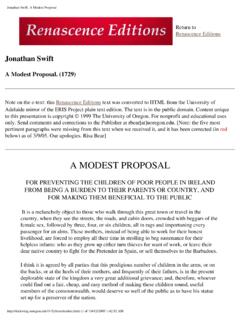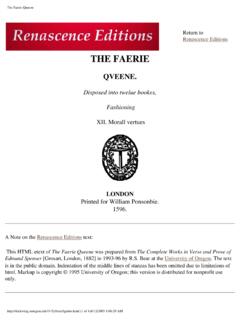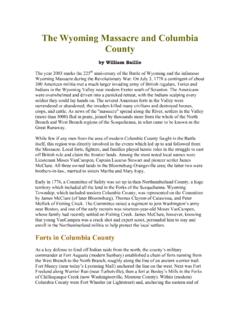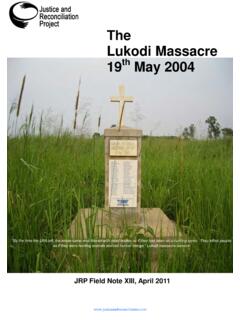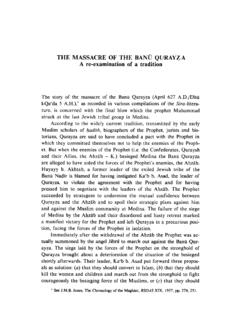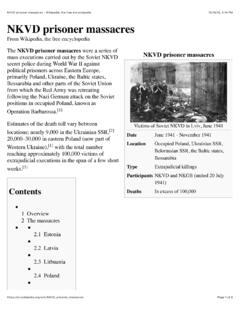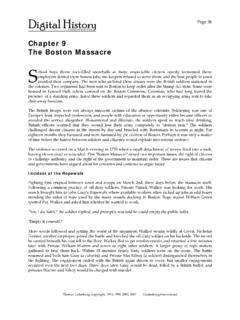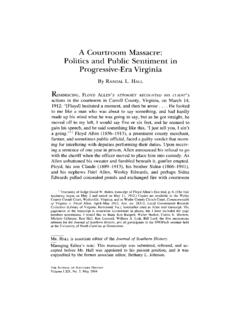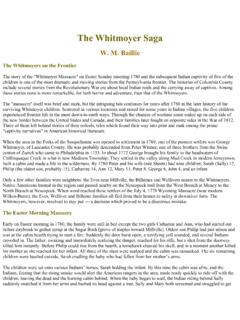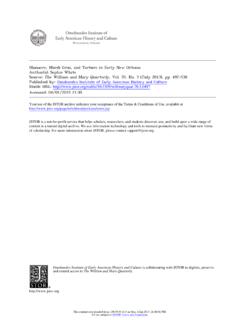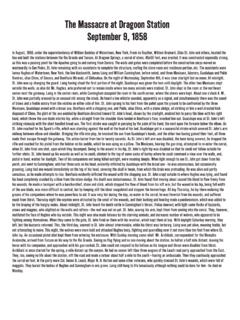Transcription of MEXICO ‘68 AN ANALYSIS OF THE TLATELOLCO MASSACRE …
1 MEXICO 68 AN ANALYSIS OF THE TLATELOLCO MASSACRE AND ITS LEGACY by KARA MICHELLE BORDEN A THESIS Presented to the Honors College of the University of Oregon in partial fulfillment of the requirements for the degree of Bachelor of Arts June 2005 ii An Abstract of the Thesis of Kara Michelle Borden for the degree of Bachelor of Arts in the Department of History to be taken June 2005 Title: MEXICO 68: AN ANALYSIS OF THE TLATELOLCO MASSACRE AND ITS LEGACY Approved: _____ Date: _____ Dr.
2 Carlos Aguirre On October 2, 1968 the Mexican government massacred hundreds of peaceful protesters in MEXICO City s TLATELOLCO plaza. Up to this point, MEXICO had not experienced large-scale violence since the Mexican Revolution of the 1910s. The government s authoritarian suppression of the movement surprised people throughout the country. The PRI, the ruling party for decades had stayed in power since the triumph of the Revolution, and viewed demands for reform as a threat to their power. With the opening ceremonies for the 1968 summer Olympic Games slated to begin October 12, the government did not want dissent visible to the international powers, and acted quickly to decapitate the movement. Since protest movements had become commonplace globally throughout 1968, both the demonstrators in MEXICO and the government learned from the examples set by other movements like those in France and Czechoslovakia in 1968.
3 Ultimately, the government chose the Soviet path and attacked its own citizenry. For years after the MASSACRE at TLATELOLCO , the event provided a reminder that the PRI government did not truly represent the interests of the populace. As the generation of protestors from 1968 has grown up, they continue to influence the course of politics in MEXICO to this day. iii ACKNOWLEDGEMENTS The author owes a great deal of gratitude to various people who have aided the completion of the thesis.
4 Professor Aguirre in particular must be thanked as the primary advisor who aided the thesis process by providing input in the topic development and writing process as well as guiding the research efforts. Additionally, the author thanks Professors Haskett and Mitchell for their gracious roles in advising and sitting on the thesis committee. Finally, it is necessary to thank the teaching staff in the Summer 2003 study abroad program in Quer taro, MEXICO who first stimulated my interest in the thesis topic. iv TABLE OF CONTENTS Chapter Page Introduction 1 2 A Growing Student Movement 7 3 Democracy in MEXICO ?
5 13 4 The Games of the XIX Olympiad 19 5 International Protest Movements: Paris 68 and the Prague Spring 25 Paris 68 27 The Prague Spring 31 6 The Legacy of MEXICO 68 37 Bibliography 51 Introduction On the night of October 2, 1968, government troops in MEXICO City s TLATELOLCO Plaza massacred hundreds of unarmed student protesters. While it is impossible to know the precise numbers of demonstrators due to the massive government cover-up of the attack, it is clear that thousands of students participated in the protest on the evening of October 2.
6 According to eyewitnesses of the chaos, at 6:10 helicopters surrounding the plaza moved down to the buildings and flares lit up the sky, causing protesters in the plaza to worry that something was For each of the 5,000-15,000 activists in the area, nearly an equal number of soldiers came to put down the Shortly after the flares startled the people assembled in the plaza, the soldiers began shooting at the crowd. For many hours the troops continued to fire indiscriminately on the men, women, and Due to the huge military presence, the protesters could not flee the scene and hundreds were literally slaughtered where they stood. 4 This thesis aims to reconstruct the context in which the Mexican government consciously chose to MASSACRE hundreds of protestors.
7 Additionally, the thesis will offer an interpretation about the legacy of the 1968 MASSACRE on the subsequent political development of MEXICO . In order to preserve the illusion that the Mexican government was a peaceful, democratic institution, president Gustavo D az Ordaz immediately covered up the immensity of the event by claiming that the number of deaths was more than 30 and less 1 Preston, Julia and Samuel Dillon, Opening MEXICO : The Making of Democracy (New York: Farrar, Straus, and Giroux, 2004), 71. 2 Matthew C. Gutmann, The Romance of Democracy: Compliant Defiance in Contemporary MEXICO (Berkeley, CA: University of California, 2002), 63. 3 Donald J. Mabry, The Mexican University and the State: Student Conflicts 1910-1971 (College Station, TX: Texas A&M University Press, 1982), 265.
8 4 Gutmann, 64. 2 than 40. 5 The news outlets, fed information by the government and watched closely by D az Ordaz, uniformly portrayed the students as armed attackers who had snipers in the buildings. Thus the government portrayed the whole affair as an unfortunate accident in which the military was simply drawn in due to the violent student actions. Due to this massive cover-up effort by the government, it is still difficult to ascertain the precise numbers of people killed, wounded, or even present at the plaza that night.
9 However, British newspaper correspondent John Rodda estimates based on careful investigation that there were at least 267 people killed and 1,200 wounded at Currently, most scholars estimate that around 300 people were killed in the violence of October 2, and many more wounded, reflecting a ten-fold increase of the false government figure of those killed. The government s claim that the students instigated the violence also has been proven untrue. The film Rojo Amanecer, released in 1992 and based on the events of 1968, portrays the life of a family living in the apartment complex surrounding TLATELOLCO and their increasing awareness of impending problems. On October 2, all electricity and telephone communication had been cut off prior to the announced start of the student protest, illustrating careful outside planning.
10 Furthermore the eyewitness accounts that documented the presence of more than 10,000 soldiers and police throughout the complex and the use of helicopters and flares as a signaling device reinforce the argument that the government had planned to intervene. In first-hand testimony from Ernesto Morales Soto, a soldier present at the TLATELOLCO MASSACRE , he recalled that many soldiers 5 Gutmann, 64. 6 Gutmann, 64. 3 were dressed as civilians, but wore identifying white gloves in order to not get caught up in the crossfire.







